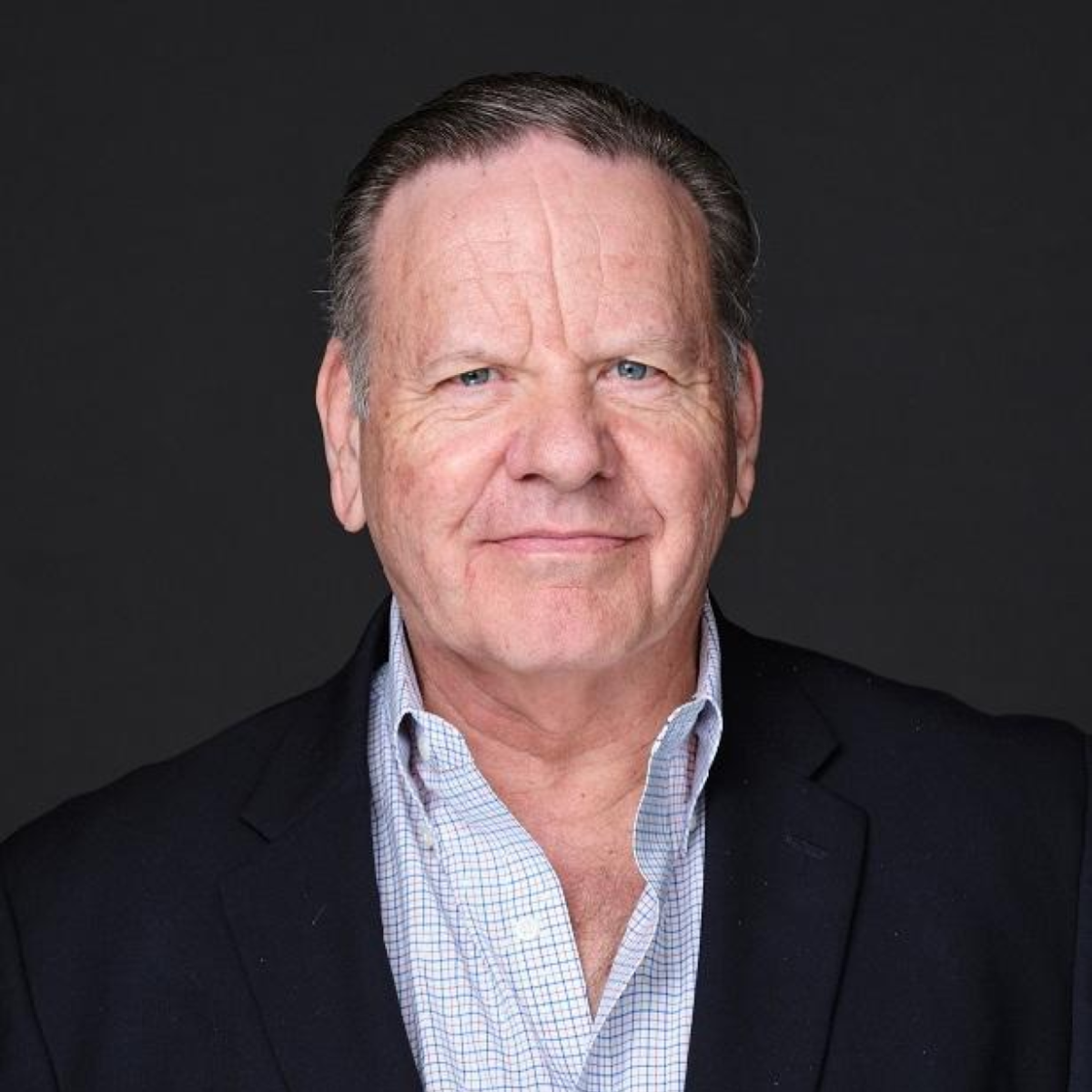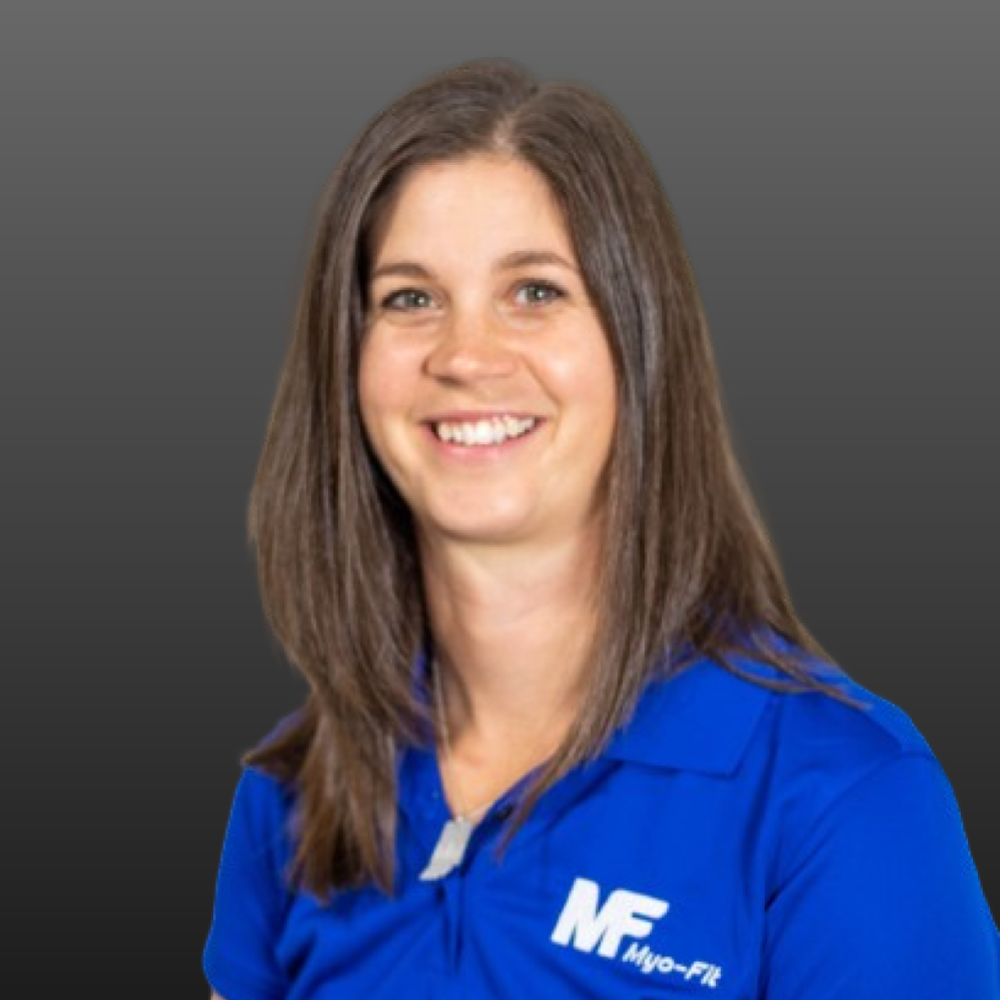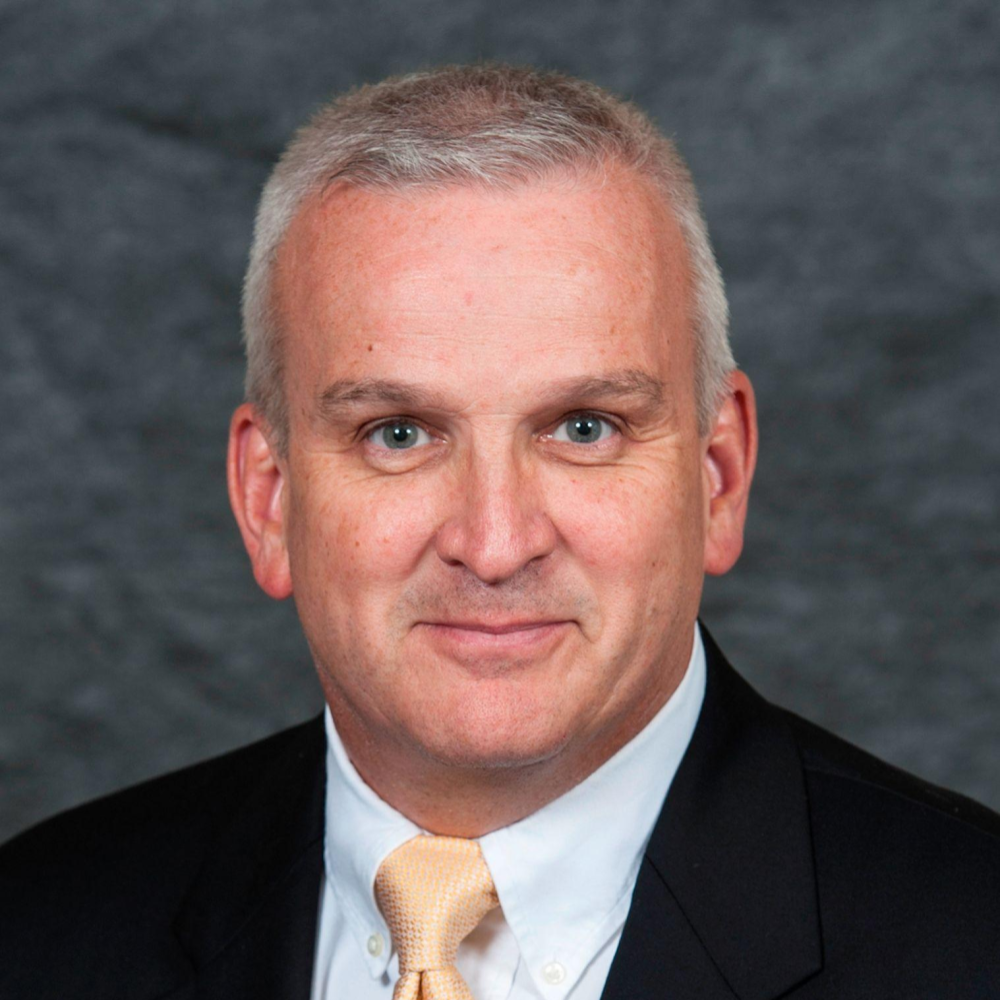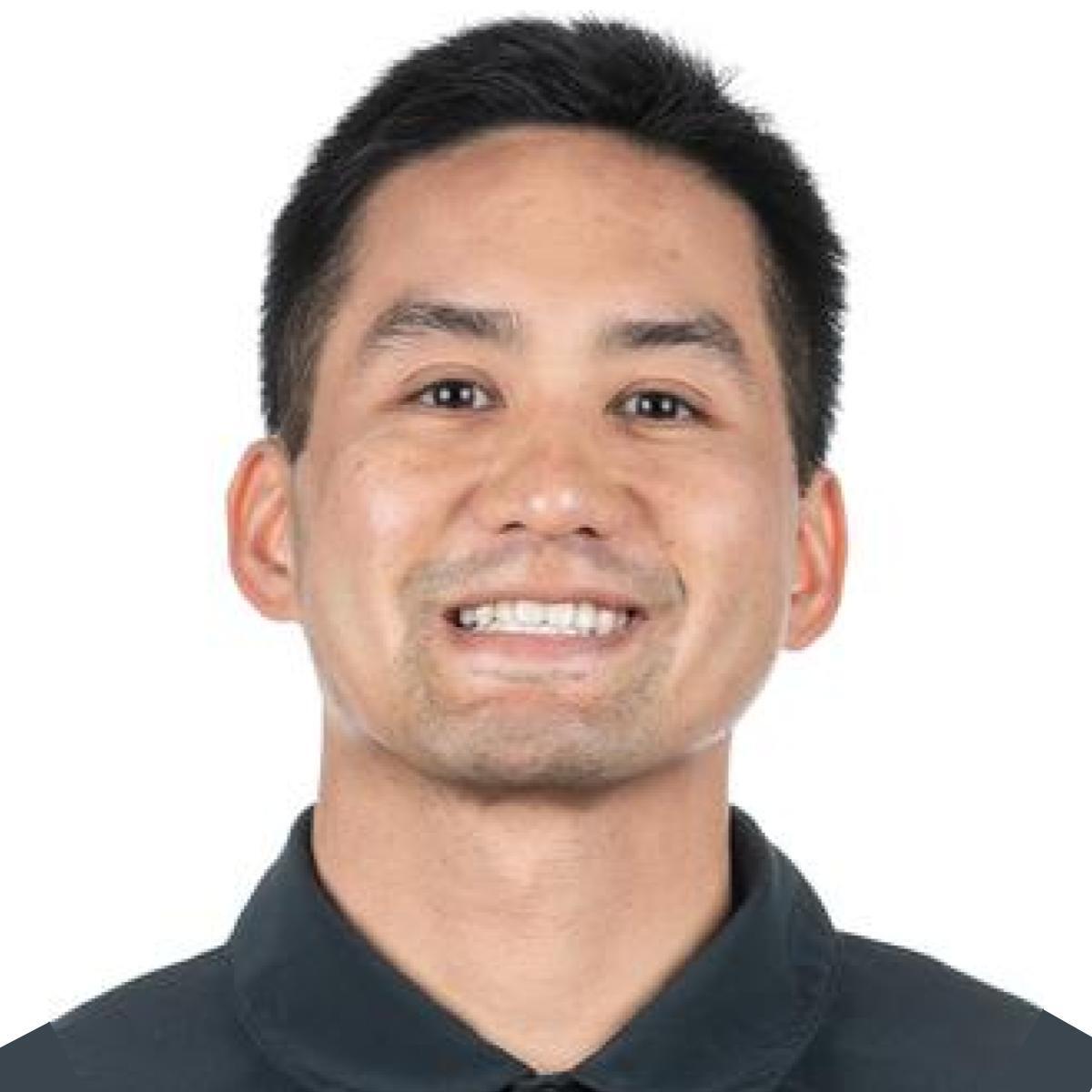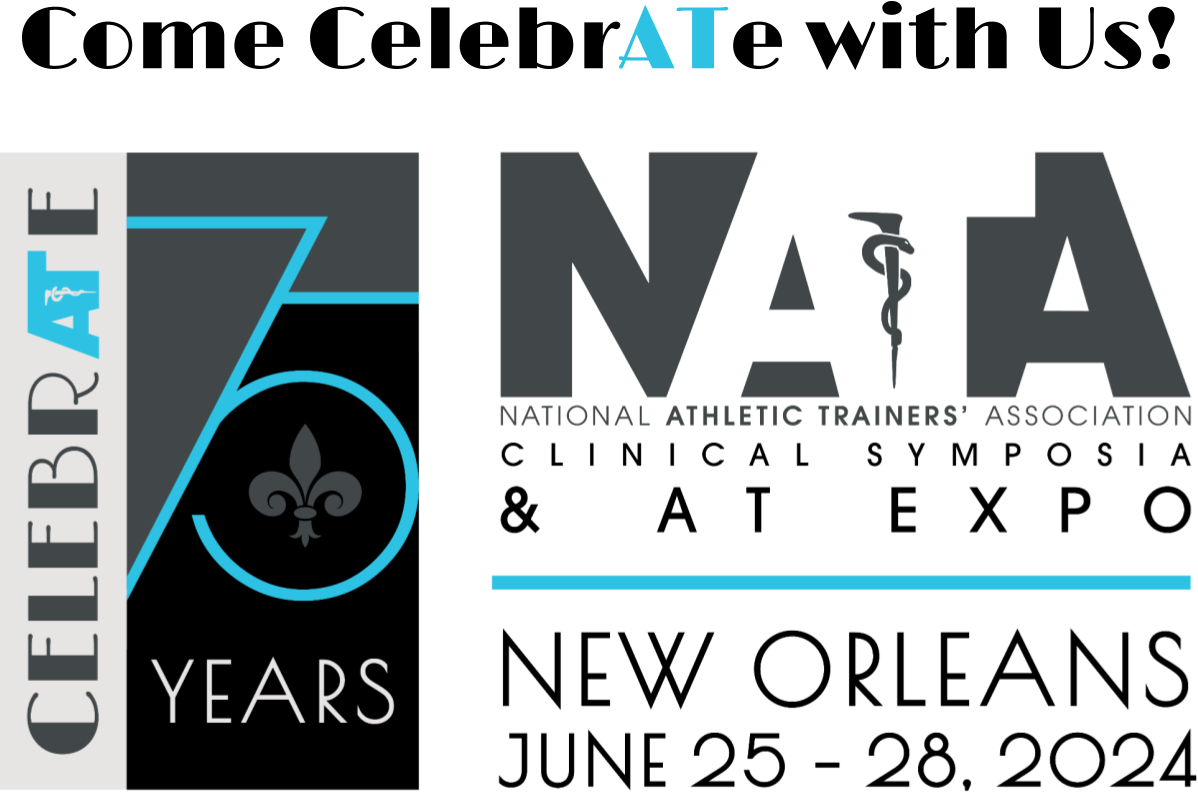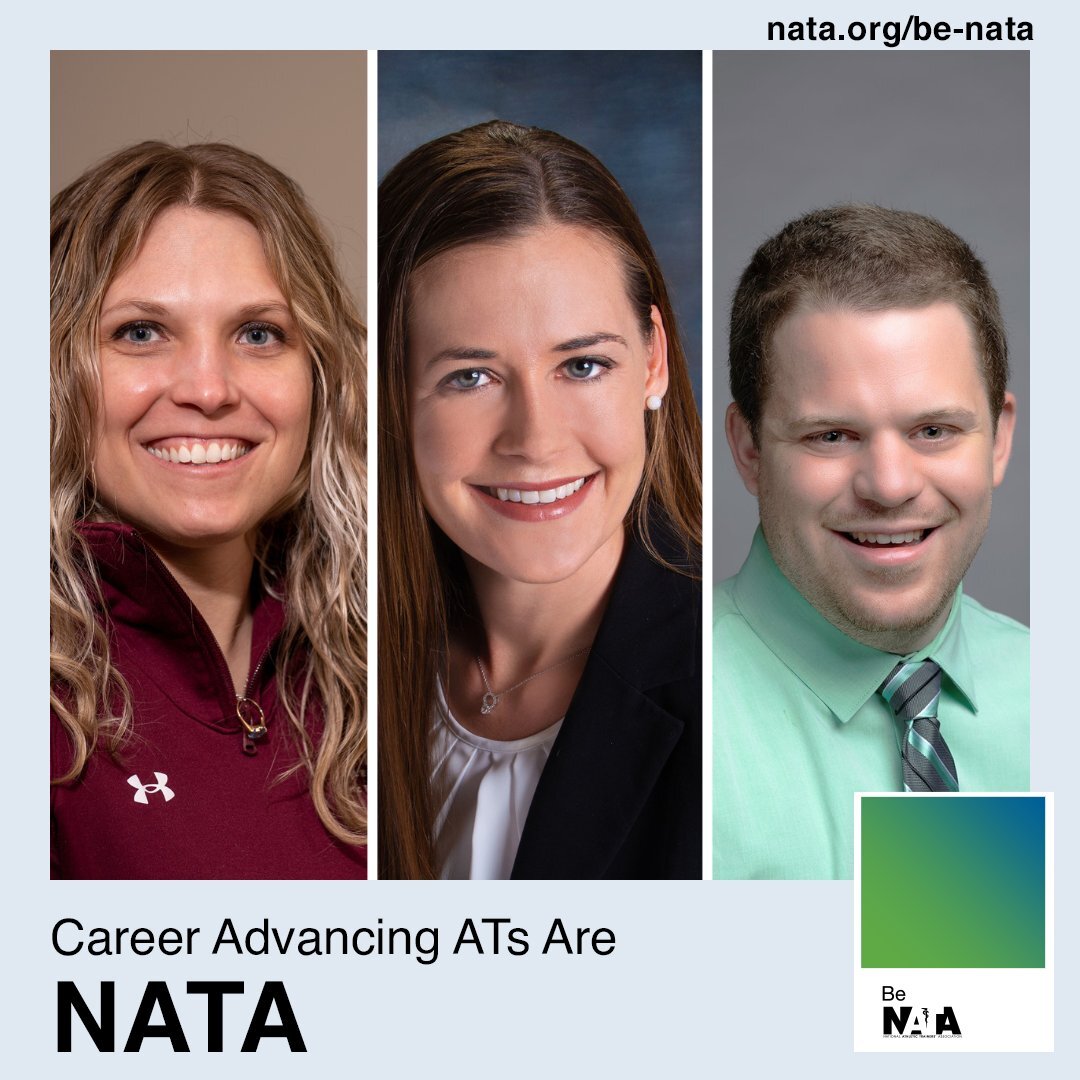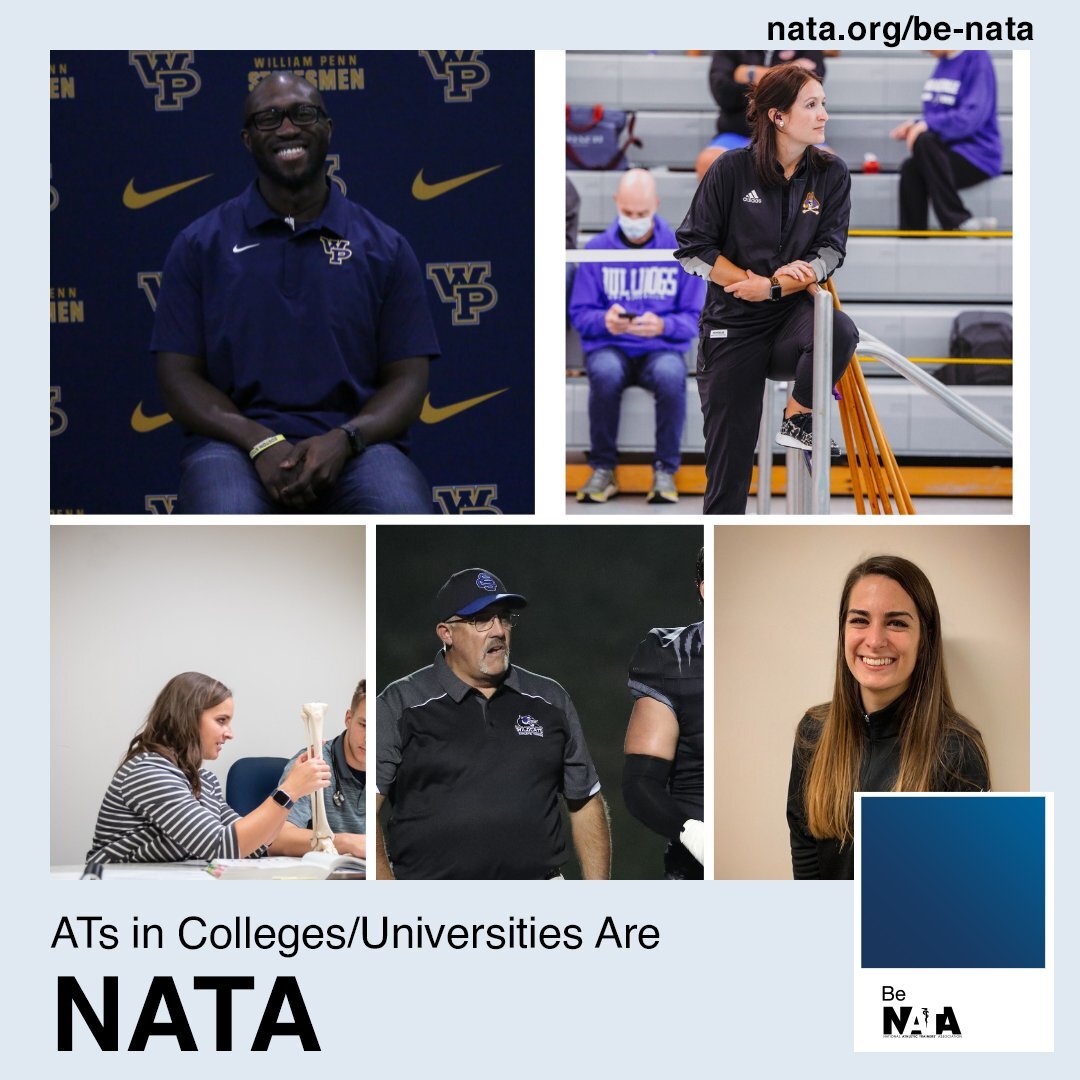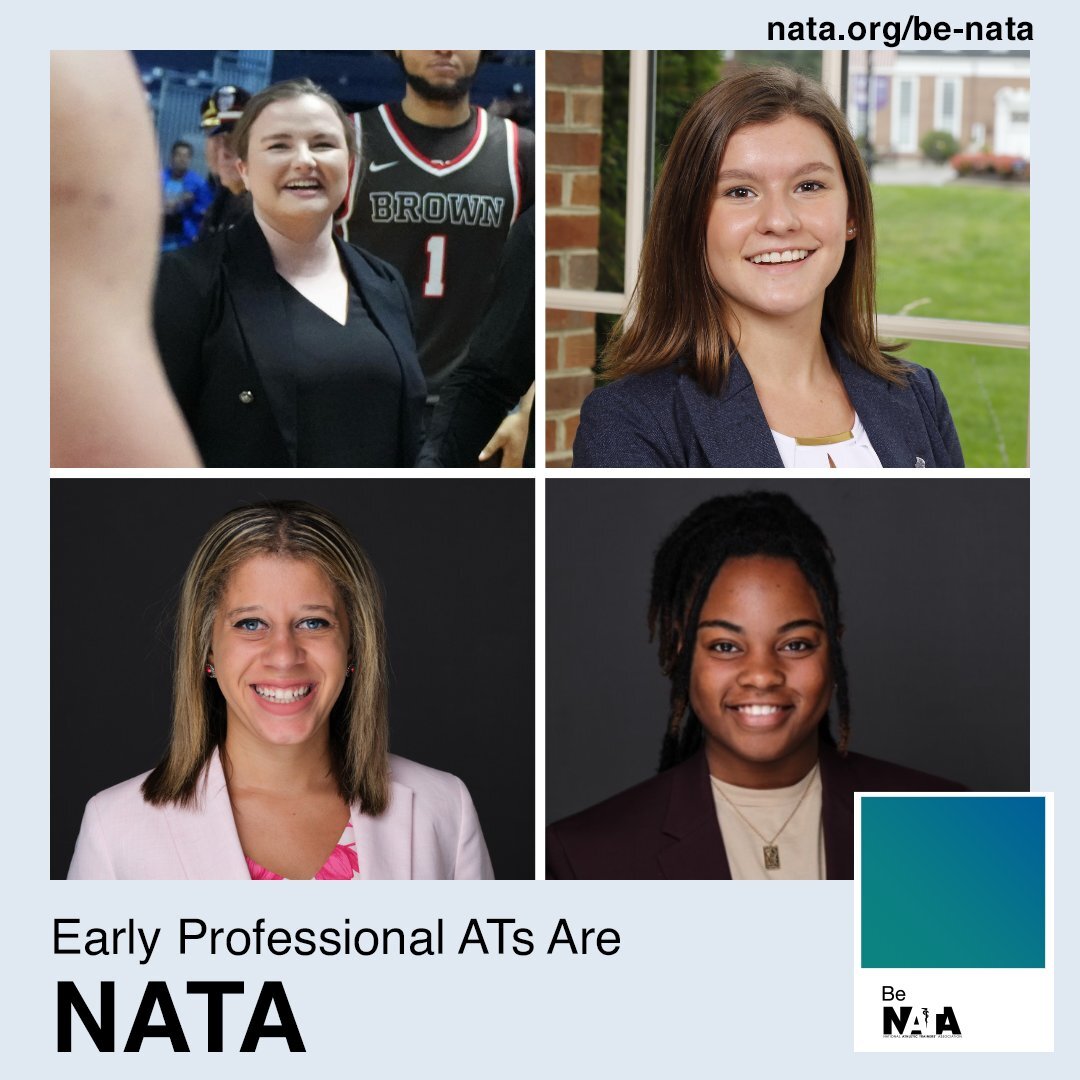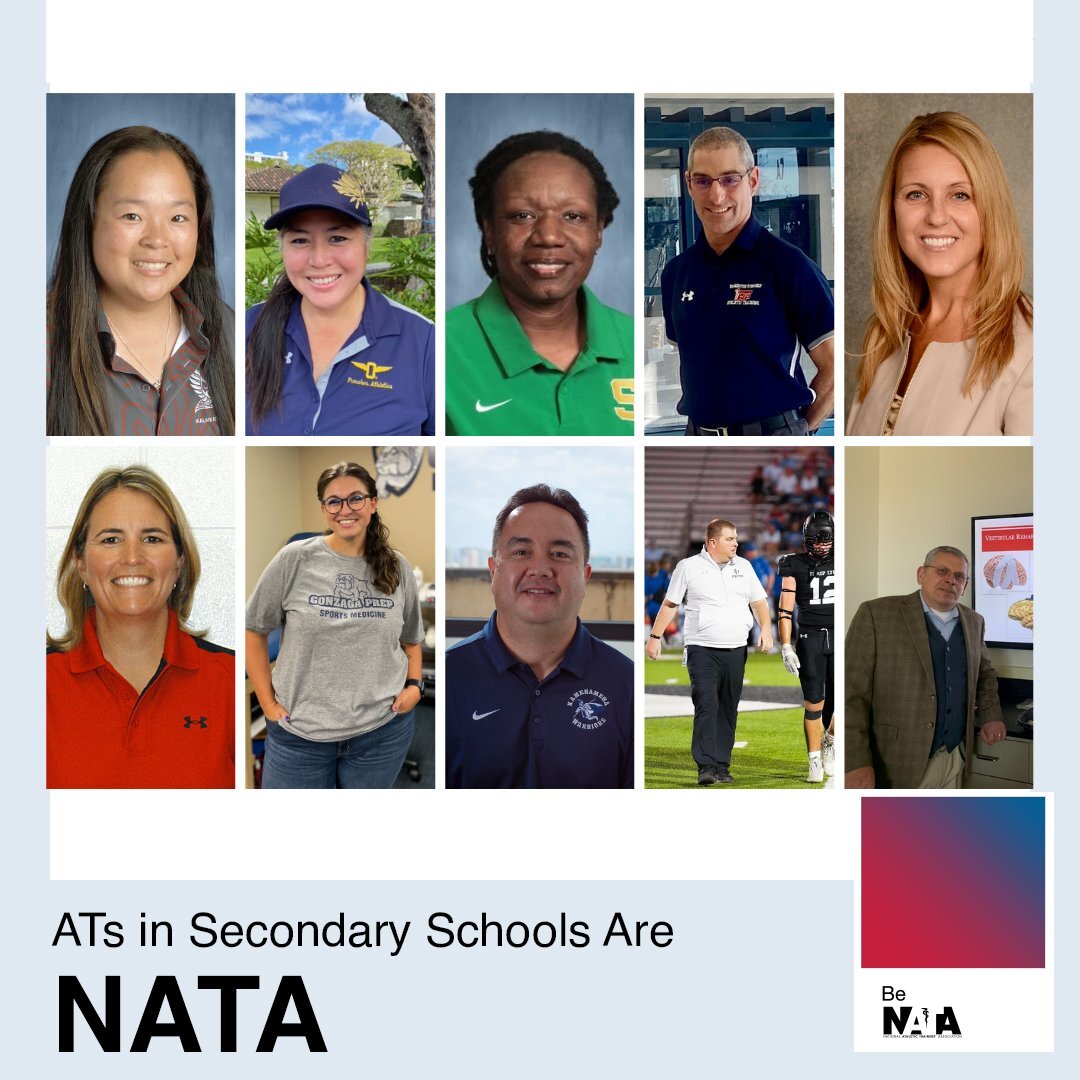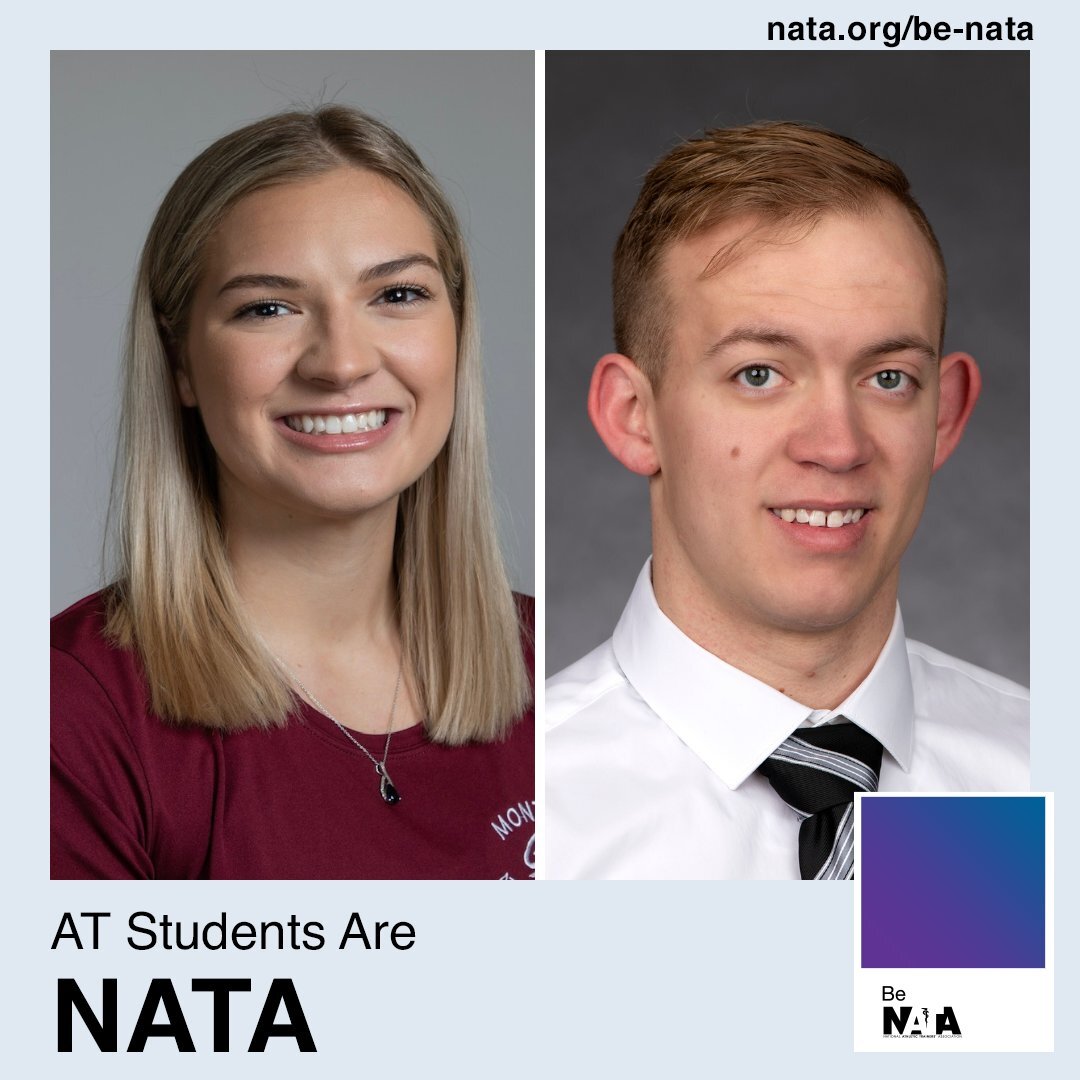

The NATA Council on Practice Advancement is hosting its fourth conference with educational content and programming that showcases the power of technology and explores the latest trends to ensure the well-being of patients in a range of settings.
Target Audience: All athletic trainers in and interested in the emerging settings of athletic training.
CEUs: 11.5 Category A
COPA Con 2024 is a virtual event and will feature live and on-demand access.
All courses must be completed by 11:59 p.m. CDT on June 7, 2024.
Join us for COPA Con 2024
Registration is OPEN!
Early Bird Pricing Ends April 12
Early Bird / Regular Pricing:
Member: $199 / $275
Nonmember: $499 / $575
Register Now

All live engagement sessions will be available on-demand by May 1.

Athletic Training Pioneers - Then and Now
Step into the past and journey to the present with four trailblazing athletic trainers –Tim Kelly, MS, ATC from armed forces, Linda Mazzoli, MS, LAT, ATC representing the physician practice setting, Nancy Burke, MS, AT Ret with public safety, and Elaine Winslow, MS, ATC, EMT-B in the performing arts– as they come together for a keynote session: "Pioneers - Then and Now."
In a moderated panel with esteemed, Emmy-award winning reporter Stephanie Kuzydym, they’ll discuss the evolution of athletic training and the indomitable spirit of those who paved the way.

Stephanie Kuzydym
Moderator
Investigative Journalist
View Bio

Tim Kelly
MS, ATC
Armed Forces
View Bio

Linda Mazzoli
MS, LAT, ATC
Physician Practice
View Bio

Nancy Burke
MS, AT Ret
Public Safety
View Bio

Elaine Winslow-Redmond
MS, ATC, EMT-B
Performing Arts
View Bio
Our panelists will share stories and insights gleaned from their collective experiences. You will gain an appreciation for the progress achieved and the challenges overcome in the athletic training world. Through engaging anecdotes, reflections, and candid conversations, they will illuminate the legacy of athletic trainers and inspire the next generation to continue pushing boundaries and forging new paths.
This engagement session is not eligible for CEUs.

Choose your preferred session.
All live engagement sessions will be available on-demand by May 1.
 |
Entrepreneurial Insight Join us for an inspiring live session with Sara Richardson, MS, LAT, ATC, experienced athletic trainer turned successful entrepreneur. Sara will share her journey from the world of athletic training to entrepreneurship, highlighting the challenges, triumphs, and lessons learned along the way. Bring your questions for the Q&A at the end of the talk. This engagement session is not eligible for CEUs. |
 |
Exploring Athletic Training in Join us for an enlightening live session with Brandi Anderson, ATC, CSCS, seasoned athletic trainer with extensive experience in the armed forces setting. Brandi will offer a glimpse into the dynamic world of athletic training within military settings, sharing her firsthand experiences, unique challenges, and profound insights. She will answer questions at the end of the session. This engagement session is not eligible for CEUs. |
From Athletes to Employees: Join us as Kyra Dodson, MBA, MS, LAT, ATC shares her passion for occupational health and discusses the evolving role of athletic trainers in the workplace. Discover how Kyra navigated her transition from traditional athletic training to the dynamic world of occupational health. Q & A will take place at the conclusion of the presentation. This engagement session is not eligible for CEUs. |

Are Esports Really Sports? The Role of the Athletic Trainer in Esports Programs


Speakers will be available live to answer attendee questions.
Esports, or competitive gaming, is growing exponentially, with millions of viewers, billions of dollars of investment and a player base garnering fans around the globe. Many secondary school and collegiate programs are instituting esports teams in both varsity and intramural settings and athletic trainers are the most qualified health care professionals to address the needs of this population. There is a need for skilled professionals to manage esports-related musculoskeletal injuries across all levels of play as well as to promote optimal physical function for performance. This session will explore the physical demands of esports, its unique culture and community, the impact of peripherals and ergonomics and the role of athletic trainers. The session will also discuss how skills for treating this population are relevant in other high performance sedentary occupations such as tech workers, music producers and digital artists.
CEUs: 1.0 Category A
Speaker(s)
Elliot Smithson, PT, DPT, ATC
Caitlin McGee, PT, DPT, MS
Moderator
Michelle Holt, MA, LAT, ATC, OPE-SC
The session entrance will close promptly at 11:55 a.m. CDT. In order to stay in compliance with BOC guidelines for issuing CEUs, late attendees will not be admitted. However, the session will be available on-demand immediately following the live session. To earn CEUs for the live session you must attend the session in its entirety and complete the assessment afterwards.

On-Demand opens April 26 at 1 p.m. CDT immediately following our live programming.
All courses must be completed by 11:59 p.m. CDT on June 7, 2024.
On-Demand Program
Are Esports Really Sports? The Role of Athletic Trainers in Esports Programs
Overview
Abstract:
Esports, or competitive gaming, is growing exponentially, with millions of viewers, billions of dollars of investment and a player base garnering fans around the globe. Many secondary school and collegiate programs are instituting esports teams in both varsity and intramural settings and athletic trainers are the most qualified health care professionals to address the needs of this population. There is a need for skilled professionals to manage esports-related musculoskeletal injuries across all levels of play as well as to promote optimal physical function for performance. This session will explore the physical demands of esports, its unique culture and community, the impact of peripherals and ergonomics and the role of athletic trainers. The session will also discuss how skills for treating this population are relevant in other high performance sedentary occupations such as tech workers, music producers and digital artists.
Learning Objectives:
- Articulate the current state of health and performance in esports.
- Connect the role of athletic training professionals to esports.
- Categorize the relationship between posture, ergonomics and injury risk in esports.
- Appraise current opportunities and barriers for athletic trainers in the field of esports medicine.
- Justify implementing health and performance initiatives at the institutional level.
How is this session relevant to a variety of settings?
Esports has evolved from a niche subculture into a mainstream phenomenon with millions of players and billions of viewers. Tournaments and leagues attract massive audiences, both online and in person, contributing to a booming industry at professional, collegiate, high school and community levels. As the esports market continues to surge, esports medicine has become integral to the ecosystem. The demand for specialized health care support has surged in tandem with the industry's growth, especially as varsity collegiate programs emerge.
Esports athletes, or competitive gamers, face distinctive health challenges associated with their intensive practice schedules. As the industry expands, so does the need for tailored health care solutions that address the physical and mental well-being of players.
"Esports medicine" has become the catch-all term to address these unique challenges. This specialized branch of sports medicine acknowledges the specialized demands of competitive gaming and aims to optimize performance, prevent injuries and enhance the overall health of esports athletes in the same way that sports medicine does traditional athletes.
To keep pace with the rapid growth of esports, the field of esports medicine adopts a multidisciplinary approach. It combines elements from athletic training, sports medicine, physical therapy, psychology and nutrition to provide comprehensive care. This approach not only contributes to the well-being of players, but also aligns with an evidence-based care model in which health care professionals are integrated rather than siloed. The remarkable market size and exponential growth of esports have propelled the emergence of esports medicine. As the industry continues to thrive, the demand for specialized health care services tailored to the unique challenges of competitive gaming is set to grow, further solidifying the relevance of esports medicine within the global esports landscape.
Level:
Essential
Domain(s):
Domain 1: Risk Reduction Wellness and Health Literacy
Domain 2: Assessment Evaluation and Diagnosis
Domain 3: Critical Incident Management
Domain 4: Therapeutic Intervention
Domain 5: Health Care Administration and Professional Responsibility
CEUs:
1.0 Category A
In order to earn your CEUs, you must watch the session video in its entirety and complete the assessment.
Speaker(s)
Elliot Smithson, PT, DPT, ATC, EMT
Caitlin McGee, PT, DPT, MS
Artificial Intelligence: ChatGPT’s Role in Enhancing Patient Care and Work Efficiency in Athletic Training Practice Settings
Overview
Abstract:
The athletic training profession is rapidly evolving, yet there remains a notable disconnect between the potential of artificial intelligence (AI) technologies, such as ChatGPT, and their current application in clinical and administrative settings. Athletic trainers aren’t fully utilizing AI for tasks such as clinical decision-making, policy development and efficient data analysis, which are essential for advancing patient care and optimizing operational efficiency. This session aims to bridge this gap by educating ATs about the capabilities and practical applications of AI tools. Many ATs are unaware of the transformative potential of AI in enhancing patient outcomes, improving work efficiency and staying abreast of evolving health care demands. This session will provide attendees with the necessary knowledge and skills to integrate AI into their daily practice, focusing on how ChatGPT can be leveraged in various athletic training scenarios. This session is designed to fill the knowledge gap and empower ATs to meet the unmet needs of their patients through informed AI utilization.
Learning Objectives:
- Identify and discuss AI applications in common job-related tasks in athletic training such as clinical decision-making, developing and revising policies and procedures and rapid data review and analysis.
- Demonstrate how to incorporate AI tools, such as ChatGPT, into essential athletic trainer administrative functions and clinical practice.
- Assess the benefits and limitations of AI in patient care and administrative functions in various athletic training practice settings.
- Create a plan for integrating AI solutions to enhance patient care and optimize daily operations.
How is this session relevant to a variety of settings?
This session will provide opportunities for all emerging settings to understand the role of AT, such as a ChatGPT. Additionally, the various applications of ChatGPT are translational across emerging settings. For example, reviewing or creating policies and procedures, proposals, or generating patient/client letters are based on similar requirements just different contexts. Also, rapid data analysis is highly beneficial for developing patient-care decisions.
Level:
Essential
Domain(s):
Domain 1: Risk Reduction Wellness and Health Literacy
Domain 2: Assessment Evaluation and Diagnosis
Domain 3: Critical Incident Management
Domain 4: Therapeutic Intervention
Domain 5: Health Care Administration and Professional Responsibility
CEUs:
1.0 Category A
In order to earn your CEUs, you must watch the session video in its entirety and complete the assessment.
Speaker(s)
Ray Castle, PhD, LAT, ATC
AT Entrepreneurship: Staying Ahead of the Curve
Overview
Abstract:
The focus of athletic training education has always been on the traditional settings. There is little, if any, time spent on emerging pathways, such as business modeling and development. The lack of time spent on business basics makes it harder for an athletic trainer to consider business ownership as an option. This session is meant to help fill that gap and stay ahead of a growing trend in the athletic training profession.
Learning Objectives:
- Identify the different ways that athletic trainers can develop and build a business.
- Compare business structures and determine which might serve an athletic trainer building a business.
- Provide examples of what else will be needed for success as an entrepreneur, beyond the typical skills of an AT.
- Enhance the scope and quality of patient care in athletic training by incorporating comprehensive education on business modeling and development.
How is this session relevant to a variety of settings?
A business can focus on any setting of athletic training. Some may create a business modeled around the collegiate or secondary school settings, others may focus on public safety or outreach. Business ownership can be done by any athletic trainer.
Level:
Advanced
Domain(s):
Domain 5: Health Care Administration and Professional Responsibility
CEUs:
1.0 Category A
In order to earn your CEUs, you must watch the session video in its entirety and complete the assessment.
Speaker(s)
Michael Donahue, DAT, MEd, ATC
Alan Reid, ATC
CBD, the Endocannabinoid System & the Athletic Trainer
Overview
Abstract:
Cannabis used as medicine dates as far back as 2,700 years ago documented in Asia. Cannabis has been reported throughout history to treat ailments such as rheumatism, constipation, gout, edema and infectious wounds, to name a few. In 1611, hemp reached America via Jamestown settlers and was acknowledged as a plant-based drug and added to the United States Pharmacopoeia in 1850 only to be removed in 1941 and later moved into a Schedule I drug in 1970. In 1988, the CB1 receptor was discovered in the human body, opening the door to understanding the endocannabinoid system and how cannabis is utilized by the human body. The discovery of this receptor led to a new direction of research and study to uncover information regarding the system to which the CB1 receptor is a component, including how it is impacted by pharmacology and the effects this system has on other systems and the global person. In February 2022, the NCAA announced a new policy that would increase the threshold for THC from 35 nanograms per milliliter to 159 nanograms per milliliter. This session will provide useful content to athletic trainers who may be tasked with providing advice or care to subjects who seek to treat conditions with cannabinoids.
Learning Objectives:
- Recognize the components of the endocannabinoid system (ECS).
- Explain the mechanisms by which cannabinoids interact with the ECS.
- Describe the physiological effects of cannabinoids at the cellular level on the global person.
How is this session relevant to a variety of settings?
CBD utilization and understanding how it can be beneficial in the health care setting is a means of advancing one’s current clinical practice.
Level:
Advanced
Domain(s):
Domain 1: Risk Reduction Wellness and Health Literacy
Domain 4: Therapeutic Intervention
CEUs:
1.0 Category A
In order to earn your CEUs, you must watch the session video in its entirety and complete the assessment.
Speaker(s)
Donita Valentine, DAT, CCISM
Brandon Holland, DAT, ABD
Creative Concepts from Beyond Health Care To Ignite Your Work Team and Elevate Your Practice
Overview
Abstract:
Despite a wealth of knowledge in sports medicine and health care, athletic trainers often struggle with workplace stagnancy and finding new ways to enhance patient care. This session addresses the gap between current standards of care and innovative approaches from other industries that can ignite creativity, connection and service excellence within athletic training/health care teams. Specifically, it tackles the lack of understanding around how concepts from disciplines including business, employee and customer experience and technology can elevate athletic training practices. By attending this session, athletic trainers will gain insights into strategically applying fresh concepts to their settings in order to boost patient outcomes, advance the profession and improve workplace connection and camaraderie. Overall, this session is essential for athletic trainers seeking to inject creativity into their teams and practices by looking beyond traditional health care alone. This session will equip attendees with game-changing ideas to elevate their workplace team and carry their athletic training practices forward.
Learning Objectives:
- Identify three innovative concepts from employee and patient experience, business and technology concepts that can be applied to enhance outcomes in athletic training practices.
- Discuss two strategies, based on insights from other industries presented, for boosting workplace connection and camaraderie within workplace teams.
- Analyze personal athletic training practice or workplace team dynamics to determine two areas most in need of fresh, innovative approaches to spark positive change.
- Develop an action plan outlining three outside-the-box ideas that will be implemented over the next year to elevate patient-care quality and fuel creativity in the workplace setting.
How is this session relevant to a variety of settings?
The concepts presented will empower ATs in attendance to strategically harness relevant trends and technologies shaping other industries. It will focus specifically on identifying cutting-edge trends, innovations and technologies happening in other industries outside of health care that could be strategically leveraged by athletic training teams to enhance patient care and workplace culture. The concepts covered range will from new technological advances that promote collaboration and foster creativity to larger workplace/management trends that cultivate greater employee engagement and satisfaction. By highlighting case studies and providing tactical takeaways throughout, this session will equip attendees to implement technological tools, systems and modern processes to stimulate positive change in their practice. The discussion will center on how athletic trainers can proactively and positively disrupt their own field – much like entrepreneurs in the tech sector – by applying fresh eyes from beyond health care alone. This embodies the ethos of leveraging "trends and technology" from the world at large rather than just health care.
Level:
Advanced
Domain(s):
Domain 5: Health Care Administration and Professional Responsibility
CEUs:
1.0 Category A
In order to earn your CEUs, you must watch the session video in its entirety and complete the assessment.
Speaker(s)
Ryan Stevens, MS, ATC, CSCS
Data Collection and Utilization: Strategies for Success in Any Practice
Overview
Abstract:
Despite the wealth of data available, many health care providers struggle to effectively collect, understand and utilize this information. This session aims to address this gap by providing comprehensive insights into efficient data-collection practices, understanding different data structures and the strategic use of this data in clinical decision-making.
Learning Objectives:
- Outline the methods and technologies used in health care data collection.
- Distinguish between different types of data and their structures in health care.
- Examine the various ways data is used to inform clinical decisions and improve patient care.
- Discuss strategies for effectively communicating data findings to health care teams.
- Provide a roadmap for implementing operational changes to adopt advanced data collection and analysis practices.
How is this session relevant to a variety of settings?
This session will explore the transformative role of data collection practices in various settings such as hospitals, clinics and research institutions. It will detail the methodologies, types of data and strategic implementation to optimize health care outcomes and operational efficiency.
Level:
Advanced
Domain(s):
Domain 5: Health Care Administration and Professional Responsibility
CEUs:
1.0 Category A
In order to earn your CEUs, you must watch the session video in its entirety and complete the assessment.
Speaker(s)
Anna Applegate, ATC
An Introduction to Ergonomic Assessment Tools: Bridging Tradition With Innovation
Overview
Abstract:
This session will dive into the fascinating world of traditional ergonomic assessment tools such as NIOSH Lifting Equation, Rapid Entire Body Assessment, Rapid Upper Limb Assessment and Strain Index. These methods have been utilized for years in the field of ergonomic evaluation, offering valuable insights into identifying and mitigating ergonomic risks. By introducing these classic tools, the session will highlight their effectiveness and reliability as well as address the significance of integrating traditional approaches with cutting-edge technological advancements. This session will bridge a knowledge gap that some athletic trainers may have about the tools and their potential benefits when working with industrial athletes and will help to identify and address risk factors.
Learning Objectives:
- Recognize the importance of ergonomic assessment in the occupational settings to prevent injuries.
- Introduce ergonomic assessment tools and their applications.
- Explore the latest technological advancements in ergonomic assessment tools and their applications.
- Discover best practices and evidence-based approaches for integrating ergonomic assessment tools into the occupational setting.
How is this session relevant to a variety of settings?
Ergonomic assessments tools can be applied to settings beyond the occupational setting. They are utilized in different settings and environments to promote injury prevention. They can be utilized to enhance patient safety and comfort during procedures in the health facilities. Furthermore, they can provide insight in tactical settings to help improve task execution.
Level:
Essential
Domain(s):
Domain 1: Risk Reduction Wellness and Health Literacy
CEUs:
0.75 Category A
In order to earn your CEUs, you must watch the session video in its entirety and complete the assessment.
Speaker(s)
Haided Estevez, MS, ATC, LAT
Occupational Health: The AT in an Interdisciplinary Team
Overview
Abstract:
While it’s currently unique to integrate the AT in continued off-site care in the occupational setting, it’s essential for patient care continuity and makes the AT a core member of an interdisciplinary team. As the demand for case management and workers’ compensation knowledge in occupational and professional settings grow, this capability is essential. Unfortunately, the AT is currently underutilized in the occupational health care continuum. This session will advocate for the AT's involvement, while educating as to how vital the AT's perspective and skill set is in the clinical team of occupational health.
Learning Objectives:
- Define occupational health as a discipline of medicine.
- Recognize elements of the provider's occupational examination and decision-making of continued care.
- Differentiate roles within the occupational health interdisciplinary team.
How is this session relevant to a variety of settings?
Many emerging settings overlap with occupational health. In public safety, performing arts and armed forces, the patient population is truly an employee. They would complete the same post-hire testing, injury care process, etc., when events occur during their time of work.
Level:
Advanced
Domain(s):
Domain 1: Risk Reduction Wellness and Health Literacy
CEUs:
1.25 Category A
In order to earn your CEUs, you must watch the session video in its entirety and complete the assessment.
Speaker(s)
Kyra Dodson, MBA, MS, LAT-ATC
Beth Syrstad, RN
Michael Sidhom, MD, MSPH
Performance Wellness: Elevating Health Care in Theme Parks Through Athletic Training
Overview
Abstract:
The session will outline the unique services and educational impact the athletic trainer can have as a health care provider in a theme park. As opposed to other performing arts setting, the athletic trainer in a theme park interacts with a range of performers. This includes dancers of various styles, singers, juggers, costume characters and technicians. With many of the performers at the onset of their careers and most without health insurance outside of workers’ compensation coverage, the athletic trainer has a tremendous impact through patient education on preventative and self-care measures.
Learning Objectives:
- Design preventative and self-care exercise programs to enhance the performers health care.
- Identify and implement various components for a comprehensive health care program in the theme park setting.
- Identify the unique challenges to health care due to the broad variety of performers in the theme park setting.
How is this session relevant to a variety of settings?
Many elements of the program can be utilized in occupational, private and emerging practices. For example, designing preventative and self-care exercise programs, implementing comprehensive health care programs, and addressing unique challenges, highlight skills and knowledge that can be applied across different athletic training scenarios. The emphasis on patient education will demonstrate a transferable focus on preventative and self-care measures that can be beneficial in various athletic training contexts.
Level:
Essential
Domain(s):
Domain 4: Therapeutic Intervention
CEUs:
1.0 Category A
In order to earn your CEUs, you must watch the session video in its entirety and complete the assessment.
Speaker(s)
Steven Cole, LAT, ATC
John Knaul, ATC
The Potential Effect of Artificial Intelligence on Athletic Training Clinical Practice
Overview
Abstract:
The term ”artificial intelligence” encompasses a range of technology applications for different purposes. The most immediate effect on athletic trainers will be the use of machine learning to develop predictive algorithms for disease prevention, diagnosis and prognosis. Longitudinal analyses of large clinical datasets will be used to develop risk profiles for individual athletes, with continually updated quantitative estimate of the probability for future occurrence of a specific type of injury or illness. Failure to adapt to impending advances could conceivably result in forfeiture of decision-making authority to some other health care professional who possesses a higher level of expertise in the utilization of information technology for guidance of clinical care.
Learning Objectives:
- Recognize the growing utilization of artificial intelligence in health care to guide selection of therapeutic interventions.
- Describe the potential benefits, as well as potential drawbacks, of the impending growth in dependence on artificial intelligence.
- Explain the relevance of predictive algorithms developed by machine learning to the process of making clinical decisions.
- Relate specific examples of change in the professional role of the AT that may emerge from the growing capabilities and increasing availability of artificial intelligence applications.
How is this session relevant to a variety of settings?
Regardless of practice setting, various applications of artificial intelligence (e.g., machine learning for delivery of precision sports medicine) will undoubtedly have increasing influence on individual patient care decisions, clinician/clinic performance assessment and program/organization administration in the near future.
Level:
Advanced
Domain(s):
Domain 1: Risk Reduction Wellness and Health Literacy
Domain 2: Assessment Evaluation and Diagnosis
Domain 4: Therapeutic Intervention
CEUs:
1.0 Category A
In order to earn your CEUs, you must watch the session video in its entirety and complete the assessment.
Speaker(s)
Gary B. Wilkerson, EdD, ATC, FNATA
What the Tech? Current Technologies for Safe Return to Sport
Overview
Abstract:
Technology in the rehab and performance space has been fast evolving, which is exciting yet overwhelming. Attendees will learn about common technologies used in high performance settings and how to evaluate the evidence behind products to better make purchasing and implementation decisions on any budget.
Learning Objectives:
- Discover emerging technologies used sports rehabilitation for better decision-making.
- Recognize key evidence of validity and reliability of technologies to determining utility.
- Discuss key performance indicators for safe return to sport using mentioned technologies.
How is this session relevant to a variety of settings?
This topic will help athletic trainers working in settings such as physician practice, performing arts, armed forces and rehab clinics to measure key impairments through validated technologies. Using such technologies, data can be collected in a consistent and clinically fast method, and can allow athletic trainers to expand their skill set in designing programs and initiatives pertaining to health care administration, public safety, analytics and outcomes.
Level:
Advanced
Domain(s):
Domain 1: Risk Reduction Wellness and Health Literacy
Domain 2: Assessment Evaluation and Diagnosis
Domain 4: Therapeutic Intervention
CEUs:
1.0 Category A
In order to earn your CEUs, you must watch the session video in its entirety and complete the assessment.
Speaker(s)
Vien Vu, DPT, SCS, CSCS
When Performing Arts Meets Athletics: The Results Are Bananas!
Overview
Abstract:
This session explores the coexistence of performing arts and athletic sports. It also addresses
how athletic trainers can leverage their skills to adapt to specific demands. This includes recognizing distinct injury patterns that may emerge, tailoring treatment approaches to accommodate the diversity of individuals involved and implementing effective rehabilitation strategies.
Learning Objectives:
- Compare different settings where performing arts and athletic sport can coexist.
- Identify ways that an athletic trainer can put into their own practice, evaluation and treatment skills from a unique setting.
- Summarize different injury patterns that can be seen in the performing arts setting.
- Develop plans on dealing with injuries sustained from a combined performing arts/athletic setting.
How is this session relevant to a variety of settings?
Athletic trainers in diverse settings encounter the challenge of catering to a broad spectrum of
individuals, and this presentation aims to explore how they can effectively integrate practices,
evaluation techniques and treatment skills from such a dynamic and diverse environment into
their own professional repertoire.
Level:
Essential
Domain(s):
Domain 3: Critical Incident Management
Domain 4: Therapeutic Intervention
Domain 5: Health Care Administration and Professional Responsibility
CEUs:
This session provides both entertainment and education. Attendees can earn 0.5 Category A CEUs upon completion.
In order to earn your CEUs, you must watch the session video in its entirety and complete the assessment.
Speaker(s)
Steven Patterson, EdD, LAT, ATC
Speakers
There are no matching speakers.
Disclaimer
It is the responsibility of athletic trainers to assure any techniques they perform are within the scope of their state practice acts. All materials presented in our educational programs are made available for educational purposes only. These materials are not intended to represent the only, or necessarily the best, methods or procedures appropriate for each situation discussed, but is intended to present an approach, view, statement or opinion of the authors or presenters that may be helpful or of interest to other practitioners.
Non-Discrimination Policy
NATA does not discriminate on the basis of race, color, national origin, religion, sex, disability, military status, sexual orientation, gender identity or age. NATA is committed to accessibility and non-discrimination in all aspects of its continuing education activities. Participants who have special needs are encouraged to contact program organizers so that all reasonable efforts to accommodate these needs can be made.
Conduct Policy
Those who take part in any NATA meeting or event, whether in-person or virtual, must treat each other with civility, courtesy and respect (both face-to-face and online). This means refraining from demeaning, discriminatory, or harassing behavior, materials, and speech. Failure to do so may result in removal from the event.
| Access Date | Quiz Result | Score | Actions |
|---|










